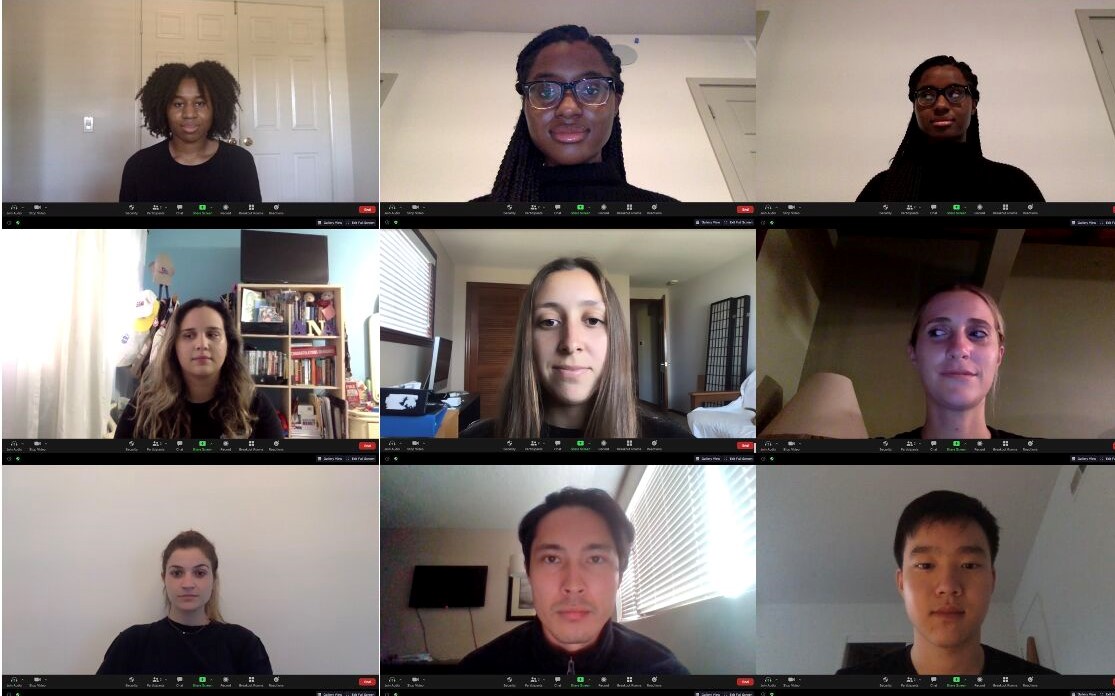Zoom/Video Conferencing Best Practices Revealed in New Research
Researchers at Stanford University and the University of Gothenburg find those who look at the camera are viewed more favorably by other Zoom/video conference participants.

Looking at your camera during Zoom calls may be the new firm handshake.
Researchers at Stanford University and the University of Gothenburg in Sweden have found that participants in Zoom and other video conferences who looked at their cameras were judged more positively than those who did not. Also judged more positively were participants with a higher camera angle. The research, published in the American Psychological Association’s Technology, Mind, and Behavior journal, has implications for educators who teach remote classes as well as use video conferences to meet with colleagues or students.
Zoom/Video Conferencing Best Practices: Look at the Camera
For the study, researchers surveyed close to 4,000 video conference users. These participants were shown 288 screenshots from a diverse sample of videoconference users, who were looking in various directions, sitting closer or farther away from their computer, and with different camera angles. Participants then rated the users according to various criteria such as attraction, likeability, and threat.
“We found out that on average, to be judged positively, one should look at the camera instead of looking at the screen or away from the computer,” says Géraldine Fauville, the study’s lead author and an assistant professor of Education Communication and Learning at the University of Gothenburg in Sweden. “In face-to-face meetings, eye contact is an essential tool to communicate behind your words. In video conferences, eye contact becomes much more complicated since the eyes that you see – from the other participants, on the screen – and the eye that sees you – the camera – are not located at the same place.”
While Fauville understands that educators teaching on Zoom will frequently glance at their screens because they need to pay attention to the expression of students, she advises making a point of looking directly at your camera as well. This will allow students to have a feeling of direct eye contact.
“One strategy to look at the camera might be to decrease the size of the video conference window and move it right below the camera,” says Fauville, a former postdoctoral researcher at Stanford. “Also why not stick small pieces of paper on each side of the camera and draw one eye on each of them? This might help you look at the camera.”
Zoom/Video Conference Best Practices: The Impact of Camera Angle and Distance
Your camera’s position can also make a difference. “When the camera is above eye level, what we call a high camera angle, people tend to judge you as more likeable and more attractive,” Fauville says. “You can create this effect by using an external camera and fixing it on top of your screen. If you use a camera integrated in your laptop, you can elevate the computers with a computer stand or simply with a box or a couple of books.”
Tools and ideas to transform education. Sign up below.
Fauville and her co-authors also looked at the impact of a close camera position versus a far one but did not find any differences between those two distances. Even so, Fauville advises a middle road when it comes to how educators position themselves in front of their cameras. “If you are too far away from your camera, it will be difficult for the other participants to actually see your face well, read your expression and follow your gaze,” she says. “On the other hand, being too close to the camera might result in a situation where the other participants see your face as very large, which might feel a bit too close for comfort for them.”
Zoom/Video Conferencing Research
The research team at Stanford that Fauville works with has led research into the study of Zoom fatigue. This new research grew out of a desire to learn more about the positive aspects of the technology. “Since we spent, and are still spending, so much time on video conferences, we thought it would be interesting to learn more about how to give a good impression,” Fauville says.
As an educator, Fauville has taken the results of this study to heart, and always makes sure the camera is above her and that no matter what she’s presenting, she doesn’t forget about its eye. “I try to look more at the camera than at the content of my slides or my notes,” she says.
Erik Ofgang is a Tech & Learning contributor. A journalist, author and educator, his work has appeared in The New York Times, the Washington Post, the Smithsonian, The Atlantic, and Associated Press. He currently teaches at Western Connecticut State University’s MFA program. While a staff writer at Connecticut Magazine he won a Society of Professional Journalism Award for his education reporting. He is interested in how humans learn and how technology can make that more effective.

